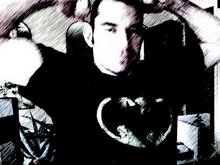 Levitation has been elevated from being pure science fiction to science fact, according to a study reported today by physicists.
Levitation has been elevated from being pure science fiction to science fact, according to a study reported today by physicists.
In earlier work a team of theoretical physicists showed that invisibility cloaks are feasible..
..now according to a parallel study, levitation has been proven possible.
A Scotland based University of St-Andrews team of physicists has created incredible levitation effects by engineering the force of nature which normally causes objects to stick together.
Professor Ulf Leonhardt and Dr. Thomas Philbin have worked out a way of reversing this phenomenon known as the casimir force, so that it can repel instead of attract.
Their discovery could ultimately lead to frictionless micro-machines with moving parts that levitate but they say that, in principle at least, the same effect could be used to levitate bigger objects too, even a person.
The Casimir force is a consequence of quantum mechanics, the theory that describes the baffling world of atoms and subatomic particles.
The force is due to neither electrical charge or gravity. The fluctuations in energy fields within the intervening empty space between the objects is one reason atoms stick together much like what enables a gecko to walk across a ceiling.
Because the Casimir force causes problems for nanotechnologists, who are trying to build electrical circuits and tiny mechanical devices on silicon chips, the team believes the feat could initially be used to stop tiny objects from sticking to each other.
Professor Leonhardt explained that the Casimir force is the particular cause of friction in some microelectromechanical systems and the ultimate cause of friction in the nano-world thus concluding that the micro or nano machines could run smoother and with less or no friction at all if one can manipulate that force.
Although it is now possible to levitate objects as big as humans, scientists are still a long way off from developing a precise anti-gravity technology.

